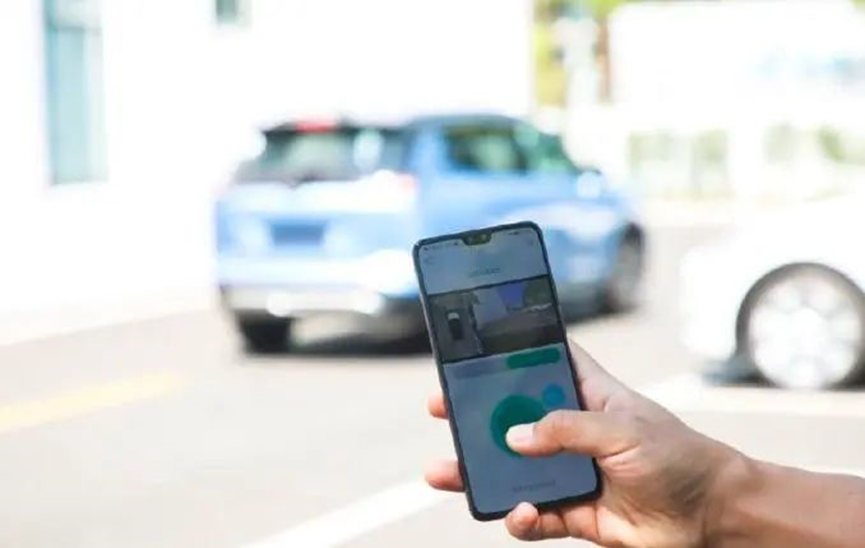When it comes to non-inductive payment, it is easy to think of ETC payment, which realizes automatic payment of vehicle brake through semi-active RFID radio frequency communication technology. With the fine application of UWB technology, people can also realize the gate induction and automatic deduction when they travel in the subway.
Recently, Shenzhen bus card platform “Shenzhen Tong” and Huiting Technology jointly released the UWB payment solution of “non-inductive off-line brake” of subway gate. Based on the multi-chip complex RADIO frequency system, the solution adopts the full stack security solution of “eSE+ COS+NFC+BLE” of Huiting Technology, and carries UWB chip for location location and safe transaction. Through the mobile phone or bus card embedded with UWB chip, the user can automatically identify himself when passing the brake, and complete the remote opening and deduction of the fare.
According to the company, the solution integrates NFC, UWB and other driver protocols into the low power Bluetooth SoC chip, reduces the difficulty of upgrading the gate through the integrated modular transformation, and is compatible with THE NFC gate. According to the official picture scene, the UWB base station should be located at the gate, and the identification range of the deduction fee is within 1.3m.
It is not uncommon for UWB (Ultra-wideband technology) to be used in non-inductive payment. At the Beijing International Urban rail Transit Exhibition in October 2021, Shenzhen Tong and VIVO also demonstrated the application scheme of “non-inductive digital RMB payment for subway brake” based on UWB technology, and realized non-inductive payment through UWB+NFC chip carried by VIVO prototype. Earlier in 2020, NXP, DOCOMO and SONY also released a demonstration of UWB’s new retail applications in the Mall, including insensitive payment, accessible parking payment, and precision advertising and marketing services.
Precise Positioning + Insensitive Payment, UWB Enters Mobile Payment
NFC, bluetooth, ir is a mainstream in the field of near field payment application, NFC (near field communication technology) because of the characteristics of high security, need not connected to the power supply, the current in the mainstream models are widely used in mobile phone, in places such as Japan and South Korea, NFC mobile phones can be used as the airport boarding validation, transportation, building entrance guard key IC card, credit card, payment card, etc.
UWB ultra-wideband technology, with the ultra-wideband pulse signal (UWB-IR) nanosecond response characteristics, combined with TOF, TDoA/AoA ranging algorithm, including line of sight (LoS) scenes and non-line-of-sight (nLoS) scenes can achieve centimeter-level positioning accuracy. In previous articles, Iot Media has introduced the application in indoor precise positioning, digital car keys and other fields in detail. UWB has the characteristics of high positioning accuracy, high transmission rate, signal interference resistance and interception, which gives it natural advantages in the application of non-inductive payment.
The principle of subway gate insensitive payment is very simple. Mobile phones and bus cards with UWB function can be regarded as a UWB mobile tag. When the base station detects the spatial positioning of the tag, it will immediately lock and follow it. UWB and eSE security chip +NFC combination to achieve financial level secure encryption payment.
NFC+UWB application, another popular application is the car virtual key. In the field of automotive digital keys, some middle and high-end models of BMW, NIO, Volkswagen and other brands have adopted the scheme of “BLE+UWB+NFC”. Bluetooth remote sensing awakens UWB for data encryption transmission, UWB is used for accurate ranging perception, and NFC is used as a backup scheme for power failure to achieve unlock control under various distance and power supply conditions.
UWB Increment Space, Success or Failure Depends on the Consumer Side
In addition to accurate positioning, UWB is also quite remarkable in short-distance high-speed data transmission. However, in the field of industrial Internet of Things, due to the rapid introduction and market popularity of wi-fi, Zigbee, BLE and other protocol standards, UWB is still capable of high-precision indoor positioning, so the demand in the B-end market is only in the millions, which is relatively scattered. Such a stock market is difficult for chip manufacturers to achieve sustainable investment.
Driven by industry demand, the C-end consumer Internet of Things has become the main battlefield in the minds of UWB manufacturers. Consumer electronics, smart tags, smart home, smart cars, and secure payment have become the key research and development scenarios of NXP, Qorvo, ST and other enterprises. For example, in the fields of insensitive access control, insensitive payment and smart home, UWB can customize home Settings according to ID information. In consumer electronics, UWB phones and their hardware can be used for indoor location, pet tracking, and fast data transmission.
Chen Zhenqi, CEO of Newwick, a domestic UWB chip company, once said that “smart phones and cars, as the most important and core intelligent terminals in the future mass Internet of everything, will also be the largest potential market of UWB technology”. ABI Research has predicted that 520 million UWB enabled smartphones will be shipped by 2025, and 32.5% of them will be integrated with UWB. This gives UWB manufacturers a lot to think about, and Qorvo expects UWB shipments to match Bluetooth usage in the future.
While chip shipment expectations are good, Qorvo said the biggest challenge for the UWB industry is the lack of a complete industrial chain to support it. UWB’s upstream chip enterprises include NXP, Qorvo, ST, Apple, Newcore, Chixin Semiconductor, Hanwei Microelectronics and other enterprises, while the middle stream has module integration manufacturers, label base station manufacturers, mobile phones and peripheral hardware manufacturers.
Quickly the company is engaged in the development of UWB chip, large quantities of “MaoJian”, but can still lack of standardization of chip, industry is difficult to form a unified connectivity standards like bluetooth, middle and lower reaches of the industrial chain vendors need to use more application case, trigger the user on the function of UWB frequency of usage, from the point of the results, The success or failure of the UWB market seems to rest on the consumer side.
In the End
The promotion of UWB insensitive payment, on the one hand, depends on whether the mobile phones with built-in UWB function can be popularized in the market. Currently, only some models of Apple, Samsung, Xiaomi and VIVO support UWB, and OPPO also launches the “one-button connection” scheme of UWB mobile phone case, so the popularity of the model and the public is still relatively limited. It remains to be seen whether it can catch up with NFC’s popularity in mobile phones, and reaching bluetooth’s size is still a vision. But judging from the “roll-in” of current phone manufacturers, the day of UWB as standard won’t be too far away.
On the other hand, there are endless innovation of high frequency consumer end scenarios. UWB for consumer tracking, location, remote control, payment is being broadened by midstream manufacturers: Apple’s Airtag, Xiaomi’s One Finger, NiO’s digital car keys, Huawei’s fusion signal indoor positioning, NXP’s ultra-wideband radar, Huidong’s metro payment… Only a variety of innovative schemes to increase the frequency of consumer access keep changing, so that consumers can feel the borderless integration of technology and life, making UWB become a word enough to break the circle.
Post time: Jun-02-2022




